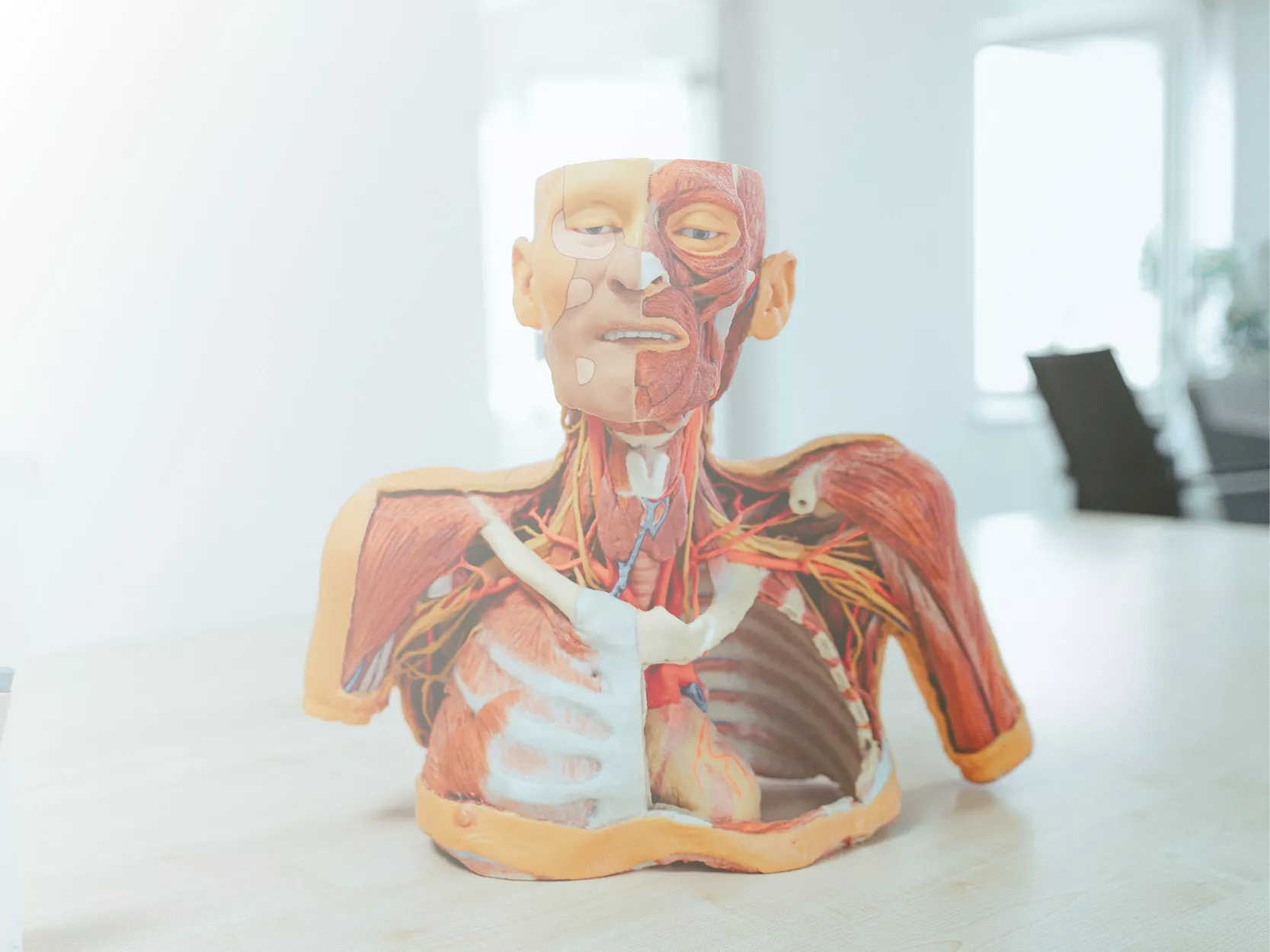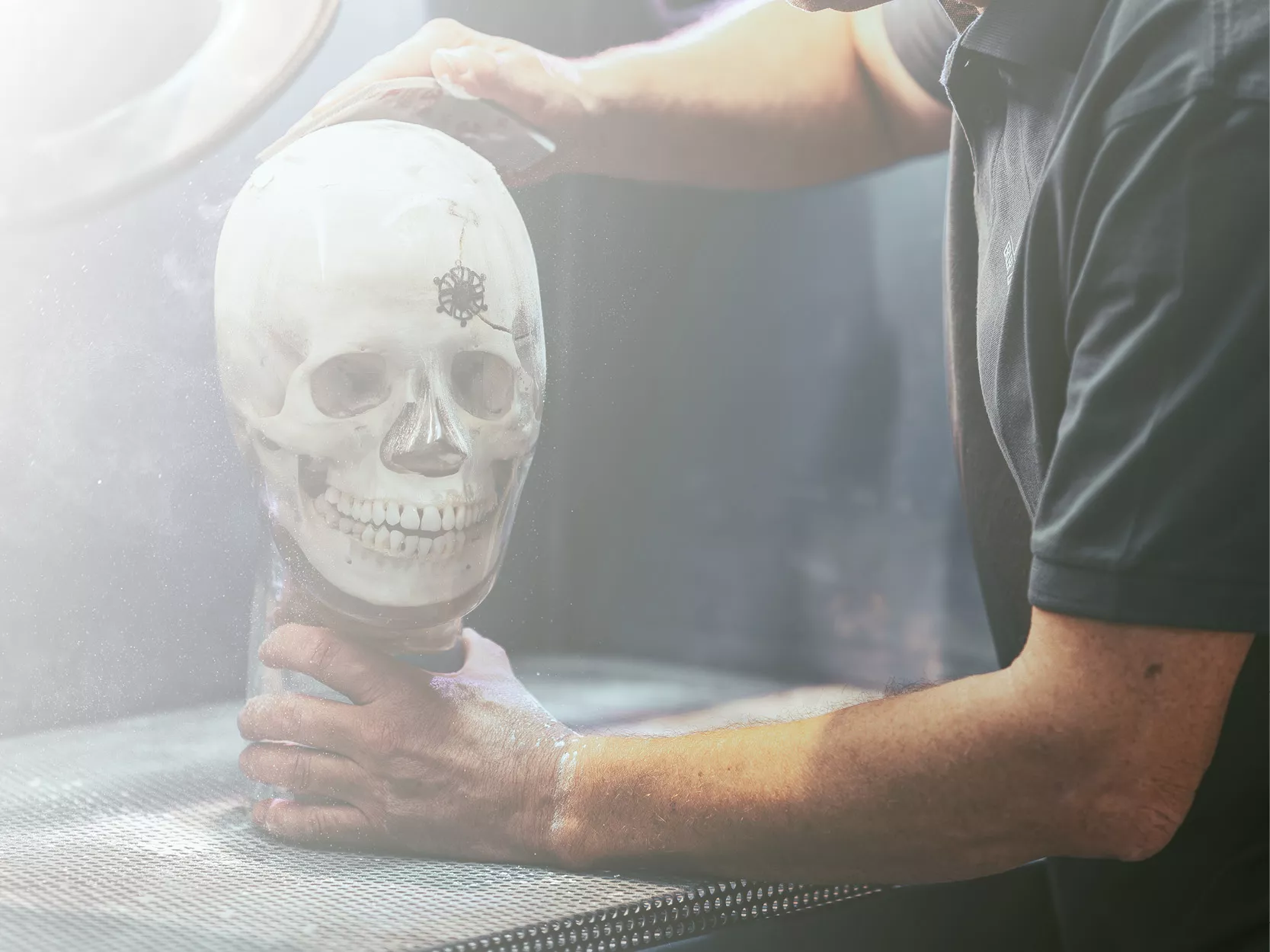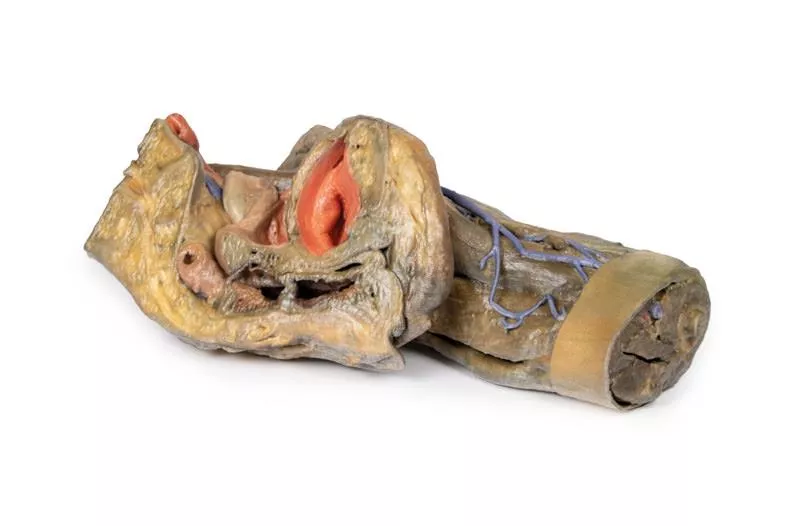Produktinformationen "Sinus Pathways"
Dieses 3D-Modell zeigt einen midsagittalen bis parasagittalen Schnitt des rechten Kopfes, wobei die Drainagewege der Nasennebenhöhlen in die Nasenhöhle mit farbigen Markierungen hervorgehoben sind.
Anterior öffnet sich der Tränennasengang (weiß) unterhalb der unteren Nasenmuschel. Die mittlere Nasenmuschel wurde durchtrennt, um die Öffnung der Kieferhöhle über den Hiatus semilunaris (grün) und den Abfluss der Stirnhöhle (blau), der vorderen (orange) und mittleren (gelb) Siebbeinzellen sichtbar zu machen. Die hinteren Siebbeinzellen münden in den oberen Nasengang (violett), während die Keilbeinhöhle oberhalb des Nasenrachenraums (rot) abfließt.
Das Modell bewahrt auch wichtige anatomische Strukturen:
Die Nasenhöhle vom Nasenloch bis zur Eustachischen Röhre, den weichen Gaumen, die Uvula und den Rachen bis hinunter zur Epiglottis. Die Mundhöhle ist durchtrennt, um den Musculus genioglossus und den Musculus geniohyoidis zu zeigen. Innerhalb der Schädelhöhle sind Teile des Frontallappens, der Sehstrukturen und der Hypophyse sowie der Hirnstamm, das Kleinhirn und das Tentorium cerebelli zu sehen. Die Sinus transversus und Sinus sigmoideus sind beidseitig zu sehen, wobei auch ein Teil des medialen Temporallappens und des lateralen Ventrikels vorhanden ist.
Anterior öffnet sich der Tränennasengang (weiß) unterhalb der unteren Nasenmuschel. Die mittlere Nasenmuschel wurde durchtrennt, um die Öffnung der Kieferhöhle über den Hiatus semilunaris (grün) und den Abfluss der Stirnhöhle (blau), der vorderen (orange) und mittleren (gelb) Siebbeinzellen sichtbar zu machen. Die hinteren Siebbeinzellen münden in den oberen Nasengang (violett), während die Keilbeinhöhle oberhalb des Nasenrachenraums (rot) abfließt.
Das Modell bewahrt auch wichtige anatomische Strukturen:
Die Nasenhöhle vom Nasenloch bis zur Eustachischen Röhre, den weichen Gaumen, die Uvula und den Rachen bis hinunter zur Epiglottis. Die Mundhöhle ist durchtrennt, um den Musculus genioglossus und den Musculus geniohyoidis zu zeigen. Innerhalb der Schädelhöhle sind Teile des Frontallappens, der Sehstrukturen und der Hypophyse sowie der Hirnstamm, das Kleinhirn und das Tentorium cerebelli zu sehen. Die Sinus transversus und Sinus sigmoideus sind beidseitig zu sehen, wobei auch ein Teil des medialen Temporallappens und des lateralen Ventrikels vorhanden ist.
Erler-Zimmer
Erler-Zimmer GmbH & Co.KG
Hauptstrasse 27
77886 Lauf
Germany
info@erler-zimmer.de
Achtung! Medizinisches Ausbildungsmaterial, kein Spielzeug. Nicht geeignet für Personen unter 14 Jahren.
Attention! Medical training material, not a toy. Not suitable for persons under 14 years of age.






































